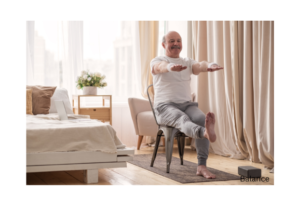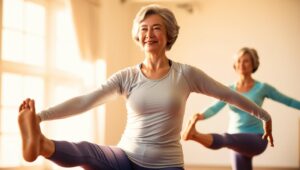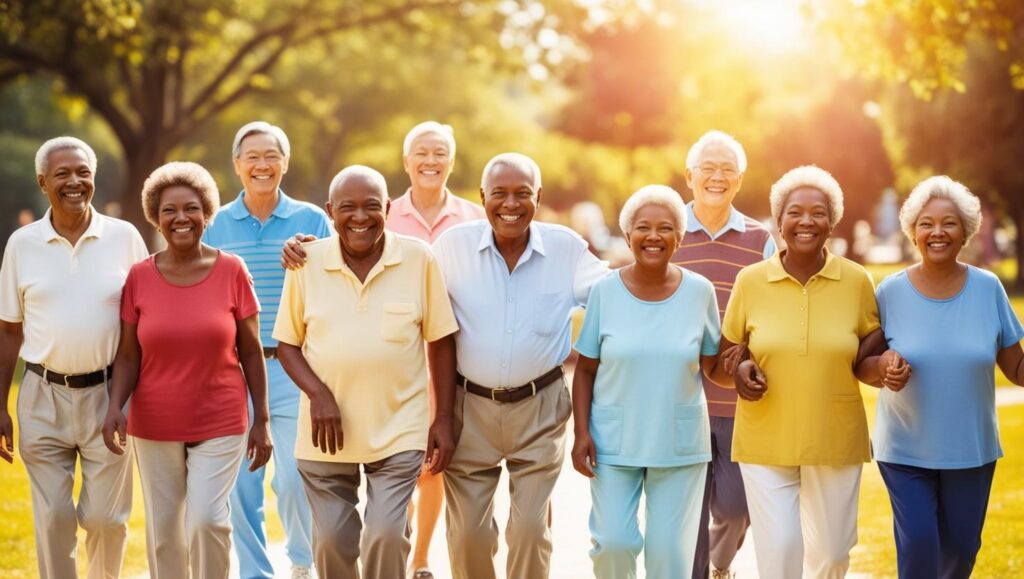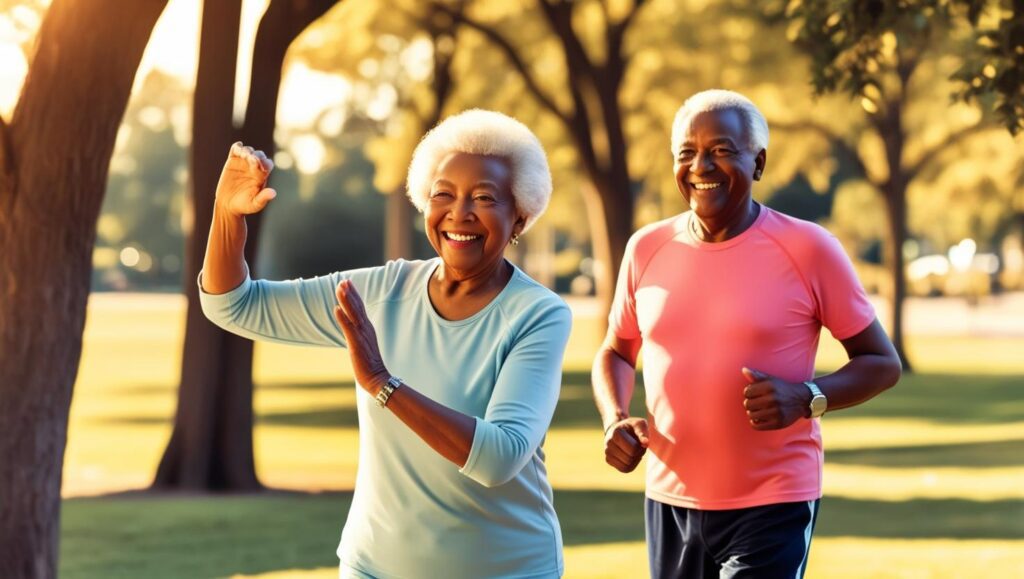Balance Exercises for Seniors: Boost Stability and Confidence
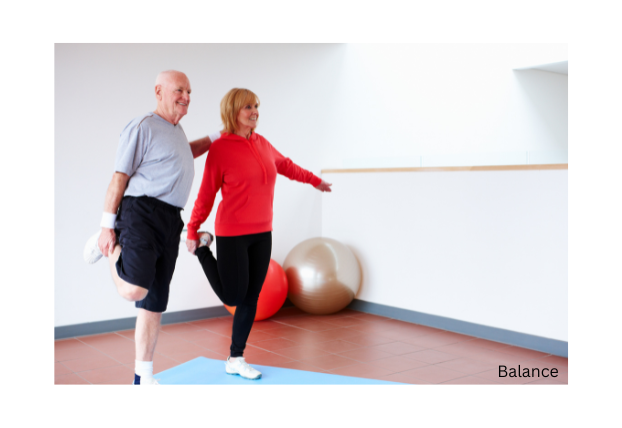
1. Why Balance Matters for Seniors
Balance isn’t something you think about every day—until a small wobble turns into a big fall. For seniors, maintaining good balance is essential for independence and overall quality of life. A steady sense of balance can mean the difference between feeling confident and mobile versus being hesitant and restricted.
Let’s talk numbers. Falls are one of the leading causes of injury among older adults, with nearly one in four seniors experiencing a fall each year. These incidents don’t just lead to bruises—they can result in broken bones, lengthy hospital stays, and extended recovery periods. The fear of falling alone can limit activities, impacting mental and emotional well-being.
By focusing on balance training, seniors can move safely and confidently through their daily routines. Improving balance isn’t just about walking or climbing stairs; it’s about maintaining stability in everything from gardening to enjoying a day with grandkids. Incorporating balance exercises into your life can be simple, enjoyable, and incredibly rewarding. Let’s explore how.
2. Six Balance Exercises to Get You Started
Adding balance exercises to your routine is a great way to build stability, strength, and confidence. Here are six simple exercises that seniors can do at home:
- Straight Leg Raises
-
- How to do it: Sit in a sturdy chair. Extend one leg as straight as possible without locking the knee. Flex your foot, point your toes upward, hold for a few seconds, then lower. Repeat 10-15 times per leg.
- Why it works: Strengthens leg muscles, which are essential for better balance.

- Knee Lifts
-
- How to do it: Stand with feet slightly apart. Lift one knee toward your chest, hold for a few seconds, then lower it. Alternate legs and aim for 30 seconds of continuous movement.
- Why it works: Improves coordination and strengthens the core.
- Side Leg Raises
-
- How to do it: Hold onto a chair or countertop for support. Lift one leg out to the side, keeping it straight. Hold for ten seconds, then lower it. Repeat 10 times on each leg.
- Why it works: Strengthens hips and legs, enhancing stability.
- Sit-to-Stand
-
- How to do it: Sit on a chair with feet flat on the floor. Use your legs to push yourself into a standing position, then sit back down. Start with five reps and increase as you gain strength.
- Why it works: Builds leg strength and mimics a common daily movement, reducing the risk of falls.
- Heel-to-Toe Walk
-
- How to do it: Walk in a straight line, placing the heel of one foot directly in front of the toes of the other. Use a wall for support if needed. Aim for 10-15 steps.
- Why it works: Enhances balance and coordination while walking.
- Standing Balance on One Foot
-
- How to do it: Stand near a wall or sturdy object for support. Lift one foot off the ground and hold the position for 10 seconds. Switch legs. Gradually increase the hold time as balance improves.
- Why it works: Challenges and strengthens your balance skills directly.

These exercises are easy to incorporate into your daily routine. Even a few minutes a day can make a big difference over time.
3. The Role of Tai Chi in Balance Training
If you’re looking for a holistic approach to improving balance, Tai Chi is a standout option. This ancient practice combines slow, deliberate movements with deep breathing and mindfulness, making it ideal for seniors.
Tai Chi focuses on shifting weight from one foot to the other in a controlled and graceful way. Over time, this improves coordination, leg strength, and core stability. It’s a low-impact exercise that’s gentle on the joints and accessible to beginners. Regular practice not only enhances balance but also boosts flexibility, endurance, and mental clarity.
One of the biggest benefits of Tai Chi is its proven ability to reduce the risk of falls among older adults. Classes are widely available and often tailored specifically to seniors, offering a supportive and social environment to learn.
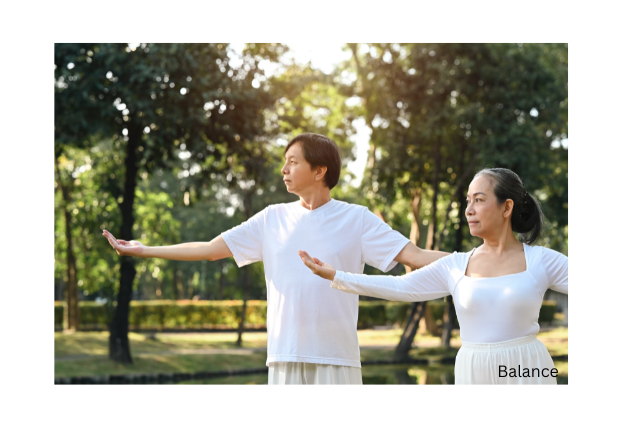
If Tai Chi feels too advanced at first, starting with simpler balance drills can help you build confidence. The key is consistency. Practicing Tai Chi or other balance exercises a few times a week can lead to noticeable improvements.
4. Practical Tips: The 3 P’s of Fall Prevention
Preventing falls goes beyond exercise—it’s about creating a safe and supportive environment. The 3 P’s of fall prevention can help:
- Prevention
-
- Identify and eliminate potential hazards in your home, such as loose rugs, cluttered walkways, or poor lighting. Keep frequently used items within easy reach to avoid unnecessary stretching or climbing.
- Preparation
-
- Equip yourself with non-slip shoes and assistive devices like canes or walkers if needed. Maintaining good nutrition and getting enough sleep are also crucial for staying alert and energetic.
- Practice
-
- Regularly engage in balance and strength exercises to build muscle memory and improve coordination. The more you practice, the easier these movements become, leading to greater confidence and mobility.
By following these simple strategies, you can significantly reduce your risk of falls and enjoy greater peace of mind.
5. Overcoming Fear of Falling
Fear of falling is common among seniors and can sometimes be just as limiting as the fall itself. This fear can lead to avoiding activities, which only weakens muscles and further impacts balance.
Using assistive devices like walkers or handrails can provide an added layer of security as you regain confidence. Remember, it’s not about eliminating risk entirely but about learning how to manage it effectively.
6. Making Balance a Part of Your Daily Life
Improving balance isn’t just about dedicated exercise sessions—it’s about incorporating balance into everyday activities. Here are a few tips to keep balance training fun and practical:
- Practice standing on one foot while brushing your teeth.
- Take a short walk on uneven surfaces, like a grassy yard or sandy beach, to challenge your stability.
- Use household tasks like carrying groceries or cleaning as opportunities to focus on posture and coordination.
Making balance a part of your daily routine ensures that you’re consistently reinforcing these important skills without it feeling like a chore.
Conclusion: Building Confidence and Stability
Balance is a cornerstone of health and independence, especially for seniors. By incorporating simple exercises like straight leg raises, side leg lifts, and sit-to-stands into your routine, you can significantly improve stability and reduce the risk of falls.
Holistic practices like Tai Chi and strategies like the 3 P’s of fall prevention provide additional tools to build confidence and stay safe. Overcoming the fear of falling takes time, but with consistent effort and support, it’s entirely achievable.
Remember, improving balance isn’t just about avoiding falls—it’s about enjoying life to the fullest. With better balance, you can continue doing the things you love with confidence and ease. So, take that first step today—your future self will thank you!

